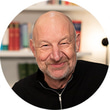- OT
- Professional support
- AOP
- “Optometry is a key deliverer of healthcare benefit”
The CEO's view
“Optometry is a key deliverer of healthcare benefit”
AOP chief executive, Adam Sampson, discusses the important of evidence and how it is used

11 October 2022
During his failed bid to be Prime Minister, Rishi Sunak argued that government policy during the pandemic was too strongly influenced by scientists. That claim did not really ring true to me. A few months earlier, the Institute for Government had published a report by Sense about Science director Tracey Brown on the UK’s response to COVID-19. The vast majority of those quoted in that report – me included – had testified that, contrary to Sunak’s view, government had listened too little and responded too late to the scientific evidence.
For those of us who have spent our lives seeking to influence policy, the reluctance of some in government to base their decisions on proper evidence is hugely frustrating. Assumption takes the place of knowledge and ideology is preferred to fact. When Michael Gove declared during the Brexit debate that “people in this country have had enough of experts,” he was only saying publicly what I have heard many of his fellows say behind closed doors. Mistrust of evidence runs deep; as one minister once said to me when I attempted to rebut one of his favoured assumptions: “Pah. You can prove anything with facts.”
Evidence has taught me that successful campaigning/influencing/lobbying/call-it-what-you-will depends on understanding and playing with some politicians’ preference for human anecdote and comforting common sense views. But not all politicians are the same, and even in these days of special adviser dominated policymaking, civil servants respond better to fact-driven argument than ideological polemic. Fact, evidence, numbers – all are essential weapons in the policy war.
Every year, we make huge efforts to prove to the NHS how much value for money GOS represents and how far funding has fallen short of what it costs to deliver. But our case would be far stronger were we able properly to evidence the contribution sight testing makes to the health of the nation
Optometrists are, of course, scientists, and facts, evidence and numbers are central to your day-to-day work. Among the AOP’s members – and at Council and Board – there are incredibly knowledgeable academics who devote their professional lives to advancing the science of eye care. And, as this edition of OT discusses, the sector has a continuing commitment to expanding its knowledge base even further.
This puts optometry on a strong platform to build from. But we need to go on assembling the evidence base to prove what we know to be true: that optometry is a key deliverer of healthcare benefit.
Take just one aspect of the optical landscape: the General Optical Services (GOS)-funded sight test. Every year, we, as part of the OFNC, set out how GOS funding has fallen desperately short of wat the sight test costs to deliver. But our case would be far stronger were we able properly to evidence the contribution sight testing makes to the health of the nation. Yes – we can show how many instances of suspected glaucoma, cataracts, AMD and so on AOP members pick up every year. But exactly what happens to the people who are referred for further investigation is unknown, still less the value to them – and society at large – of those interventions. We can argue that the money spent on GOS sight tests is dwarfed by the saving to the Exchequer, but we can’t prove it.
Let us work to build our evidence base. But let’s not fool ourselves: evidence is a vital starting-point, but it is just a starting-point. Once we assemble it, we have to use it correctly
The discussion of evidence is not just an academic one: it is one that is vital to our future. And the AOP needs to play our part too. That’s why we continue with our Voice of Optometry research surveys, which are invaluable for helping us raise the issues that matter within the profession with the media. And, later this year, we will be surveying you, our members, to find out your thoughts on the evolving profession and your career path. Plus, we are continuing to trawl through the information that is routinely collected in so many disparate parts of our sector to build the underlying evidence base behind our work.
Assembling the evidence is only half the battle; we need to bring the evidence to life through effective communications. And that may mean packaging it up into easily saleable soundbites – something which is challenging and at times uncomfortable. When I was CEO of Shelter, we responded to the fact that there were huge numbers of children being forced to live in insecure, squalid or overcrowded housing by creating a movement we called the Million Children Campaign. Just before launch, I had a visit from my head of policy. “Adam,” he said, his brow sweaty, “we are going to have to pull the campaign. I’ve been crunching the numbers and all I can safely evidence is 987,000 children.” My response was robust, so he tried again. “Alright – but can we add a footnote to all the posters to say that the word ‘million’ should be ‘987,000’?”
Evidence is an essential component in proper decision-making, but, as David Boyle argues in his wonderful book The Tyranny of Numbers, facts can mislead as much as they can inform. Asking the wrong question, measuring the wrong thing, tracking progress towards the wrong target – all are highly dangerous. So let us work to build our evidence base in optometry – but once we assemble it, we have to use it correctly.
Advertisement


Comments (0)
You must be logged in to join the discussion. Log in